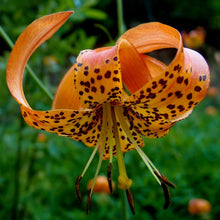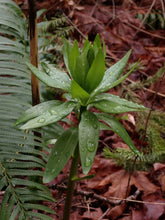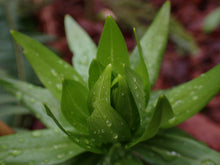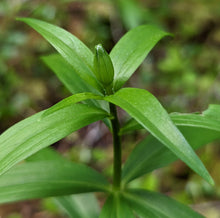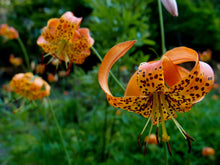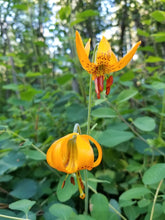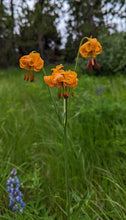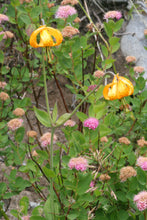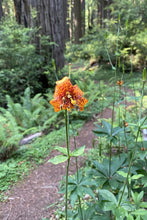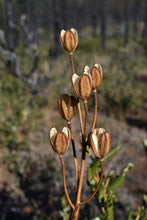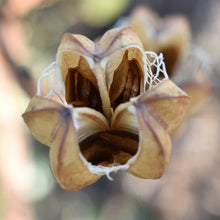
Lilium columbianum
Tiger lily, also known as Columbia lily or Oregon lily, is a late spring - summer blooming bulb with slender, erect stems that can grow up to 5’ tall flaunting multiple gorgeous, nodding orange flowers. Its maroon-speckled tepals flare back elegantly toward the stem creating visual space for the striking stamen that protrude well beyond the petals in a tight cluster. Bright green leaves are predominantly at the base of the stems in whorled clusters, while smaller, lance-shaped leaves dot the stem upwards.
- Plant type/canopy layer: deciduous, perennial, herbaceous plant
- Size at maturity: 12-60" tall, 12" wide
- Light requirements: full sun, part sun/part shade
- Moisture requirements: perennially moist soil, may require summer watering
- Bloom time: May - August (June - July in the Portland Metro area)
- Growth rate/ease: medium growth rate, moderately easy to grow
- Wildlife support: flowers attract and provide nectar to hummingbirds, adult butterflies, bees and other insect pollinators; exerted stamens and a flower form allows for ample pollination by large butterflies, particularly western tiger swallowtails and pale swallowtails; overall plant is a caterpillar host plant and larval food source for native butterflies and moths
- Native habitat/range: locally common in westside and subalpine meadows, forests gaps and roadsides in conifer forest especially along coast, up to 2000m, from north western California to British Columbia. Portland Plant List - yes.
- Special features & uses: hummingbird favorite
What to Expect + Gardening with Tiger Lily: For spring orders, depending on the weather and the date of your order pick-up, bulbs may be just emerging or already dying back for the season. Bulbs can be fragile when they're actively growing in spring. So, either plant with care or keep it in its pot and wait until it dies back before planting. By early summer, the plant will die back completely and the bulb will be easy to transplant. If you go this route, leave the pot in a sheltered place and water sparingly, so that you don't rot the bulb. For fall orders, you can expect what looks like a pot of dirt. The bulb inside may appear slightly shriveled, which is its normal, dormant fall look. Fall is generally considered an excellent time to plant bulbs.
This is a treasure to behold when hiking in the woods. So, even a single Tiger Lily blooming in the home meadow or woodland garden is a delight, while successfully establishing a small patch would be a sheer joy. This bulb is a good fit for mature natural gardens, where beds have been built up over time and are rich in organic matter or works quite nicely intermixed in part sun/part shade container plantings. It requires part-to-full sun and moist soils; so moderate summer water may be needed, particularly in sunnier areas that tend to dry out. It is a favored food of many garden critters that have learned over millennia that the booty humans cache in the ground is worth digging for. Consider caging this bulb immediately after planting, until your scent and visible ground disturbance is long gone to keep it safe from above ground diggers like squirrels and chipmunks.
Photo Credits 1 & 5 (flowers close): Nikkie West, Sparrowhawk Native Plants
Photo Credits 2 & 3 (foliage/raindrops): © elik03, some rights reserved (CC-BY)
Photo Credit 4 (flower bud): - © John A Haskins, some rights reserved (CC-BY)
Photo Credit 6 (w/snowberry): © Megan Blackmore, some rights reserved (CC-BY)
Photo Credit 7 (open habitat): © Chloe and Trevor Van Loon, some rights reserved (CC-BY)
Photo Credit 8 (alpine habitat): © runcator, some rights reserved (CC-BY)
Photo Credit 9 (trailside): © Mohammed Shamma, some rights reserved (CC-BY)
Photo Credit 10 & 11 (seed heads): © Gail A Baker, some rights reserved (CC-BY)











